Derrel
Mr. Rain Cloud
- Joined
- Jul 23, 2009
- Messages
- 48,225
- Reaction score
- 18,941
- Location
- USA
- Website
- www.pbase.com
- Can others edit my Photos
- Photos OK to edit
We've had a thread going on about most commonly-used lens lengths, as shown by EXIF information, so rather than hijack that post, I thought I'd start one that shows why me, and others, do not put a lot of stock in keeping track of focal lengths used: Because the focal lengths used depends so,so,so much on the situation at hand. And the subject matter. And whethter you have an all-prime, or all-zoom, or a mixed zoom and primes setup with you. I sought out situations where I had ONLY primes (multiple primes); only TWO primes; and all-zoom, as well as prime-and-zoom.
Here is why I do not bother 'tracking" EXIF information. EVERY shoot, every day, can be different. I changed up Nerwin's experiment, up but still used Lightroom and the Exposure Settings charting function it offers, and picked several shoots that had high numbers of shots, and had a fair amount of effort dedicated toward them, with a lot of pre-planning and thought on lenses needed lights, and so on. All were shot on FX Nikon, so the focal length choices were all for the same FOV. Not that I often use a zoom as-if it were a prime, and make very minute focal length changes, and then stay at that length. This also shows how AUTO-ISO in Nikon, Manual mode, can make subtle adjustments to maintian very specific exposures.

Note use of AUTO ISO, and yet a preponderance of 1/250 shutter but also an almost even split at 1/100 and 1/500; preponderance of ISO 320 and then ISO 160; apertures used were almost totally from f/4.0 to f/5.6.
***************

Boudoir,indoor, all-electronic flash, using only five prime lenses, and mostly 1/100 second shutter (370 frames at 1/100) to balance ambient with flash. A total of 441 frames in this segment, using three apertures. The majority of images were shot at ISO 320 for the simple reason that ISO 320 gave the right exposure AND provided very fast flash recycling on a 400 Watt-second power pack: by boosting ISO, it allowed me to cut flash recyling times from 3.7 seconds to 0.5 seconds, which vastly improves the pace of the posing and the shoot.
********
This was shot the same day as the above boudoir set, and was part of a three-family casual photo shoot. Two primes were used, 85mm and 105mm: two ISO values used, ISO 250 and ISO 400;: the two f/stops used were f/9 and f/11: note the varied mixture of shutter speeds used, to control and or change background density and the amount of flash-to-modeling light ratio: 7 different shutter speeds, but the same two ISO levels and same two f/stops, and same two lenses (85mm/1.4 AF-D and 105mm/2 AF-D D.C.).

************

Solo female, Maternity segment, Indoor Electronic Flash. Working with a 45mm-P lens and a 70-300 VR zoom lens, and a 90mm macro, which was used for 4 frames! Note the very tight framing choices made with the zoom; note the use of the ISO value to regulate the effect of the flash power pack, over about five different light set-ups. Notice that I shot 463 of 471 frames at ONE f/stop value? That of f/7.1? I kept the f/stop constant throughout the entire shoot, but moved ISO settings to achieve the right exposure. This is old-school, shifting exposure via ISO when using studio flash. ISO levels of 80 ( 300 frames ) and ISO 320 (108 frames) on a FF modern sensor like the D3x has are almost the same when studio flash is used to supply controlled lighting, which makes for fast, easy post-processing.
********

Same maternity session, but miles away, at an outdoor location, using fill-flash, and AUO-ISO in Manual mode, to achieve an exact density for each segment of the shoot. Out of 407 frames, 370 were shot at f/5.6. ALL were shot on the 70-300 VR lens. Notice the way the zoom was used for precise framing. The two what I call "black frames," alert me to shifts I must catch when batch processing.
nerwin said:I used the library filter in Lightroom and changed one of the columns to focal length and then>>>.
Here is why I do not bother 'tracking" EXIF information. EVERY shoot, every day, can be different. I changed up Nerwin's experiment, up but still used Lightroom and the Exposure Settings charting function it offers, and picked several shoots that had high numbers of shots, and had a fair amount of effort dedicated toward them, with a lot of pre-planning and thought on lenses needed lights, and so on. All were shot on FX Nikon, so the focal length choices were all for the same FOV. Not that I often use a zoom as-if it were a prime, and make very minute focal length changes, and then stay at that length. This also shows how AUTO-ISO in Nikon, Manual mode, can make subtle adjustments to maintian very specific exposures.
Note use of AUTO ISO, and yet a preponderance of 1/250 shutter but also an almost even split at 1/100 and 1/500; preponderance of ISO 320 and then ISO 160; apertures used were almost totally from f/4.0 to f/5.6.
***************
Boudoir,indoor, all-electronic flash, using only five prime lenses, and mostly 1/100 second shutter (370 frames at 1/100) to balance ambient with flash. A total of 441 frames in this segment, using three apertures. The majority of images were shot at ISO 320 for the simple reason that ISO 320 gave the right exposure AND provided very fast flash recycling on a 400 Watt-second power pack: by boosting ISO, it allowed me to cut flash recyling times from 3.7 seconds to 0.5 seconds, which vastly improves the pace of the posing and the shoot.
********
This was shot the same day as the above boudoir set, and was part of a three-family casual photo shoot. Two primes were used, 85mm and 105mm: two ISO values used, ISO 250 and ISO 400;: the two f/stops used were f/9 and f/11: note the varied mixture of shutter speeds used, to control and or change background density and the amount of flash-to-modeling light ratio: 7 different shutter speeds, but the same two ISO levels and same two f/stops, and same two lenses (85mm/1.4 AF-D and 105mm/2 AF-D D.C.).
************
Solo female, Maternity segment, Indoor Electronic Flash. Working with a 45mm-P lens and a 70-300 VR zoom lens, and a 90mm macro, which was used for 4 frames! Note the very tight framing choices made with the zoom; note the use of the ISO value to regulate the effect of the flash power pack, over about five different light set-ups. Notice that I shot 463 of 471 frames at ONE f/stop value? That of f/7.1? I kept the f/stop constant throughout the entire shoot, but moved ISO settings to achieve the right exposure. This is old-school, shifting exposure via ISO when using studio flash. ISO levels of 80 ( 300 frames ) and ISO 320 (108 frames) on a FF modern sensor like the D3x has are almost the same when studio flash is used to supply controlled lighting, which makes for fast, easy post-processing.
********
Same maternity session, but miles away, at an outdoor location, using fill-flash, and AUO-ISO in Manual mode, to achieve an exact density for each segment of the shoot. Out of 407 frames, 370 were shot at f/5.6. ALL were shot on the 70-300 VR lens. Notice the way the zoom was used for precise framing. The two what I call "black frames," alert me to shifts I must catch when batch processing.
Last edited:


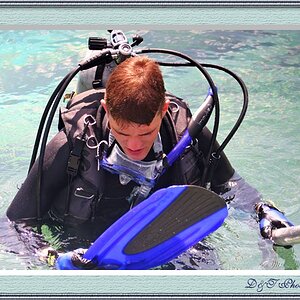
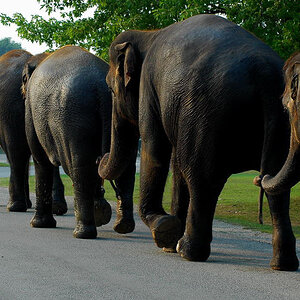

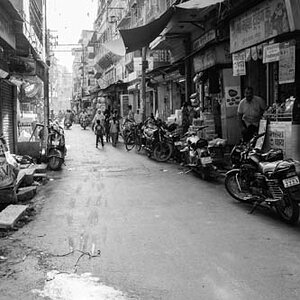
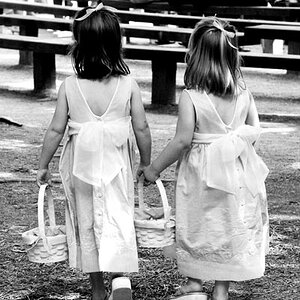
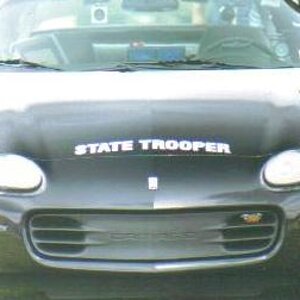
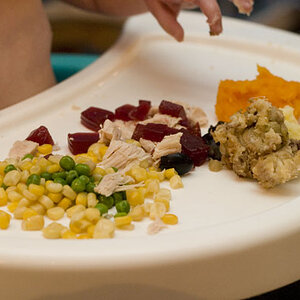
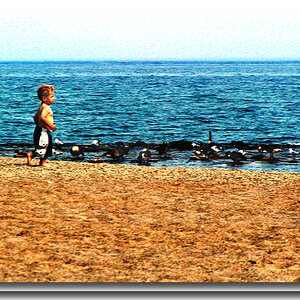

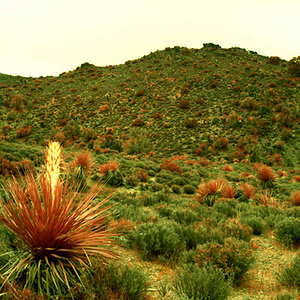
![[No title]](/data/xfmg/thumbnail/38/38443-d3f00036791c5f915b132320c9ac8865.jpg?1619738614)
![[No title]](/data/xfmg/thumbnail/33/33352-15e8cd88072467dd938f6af96d0f15a3.jpg?1619735918)